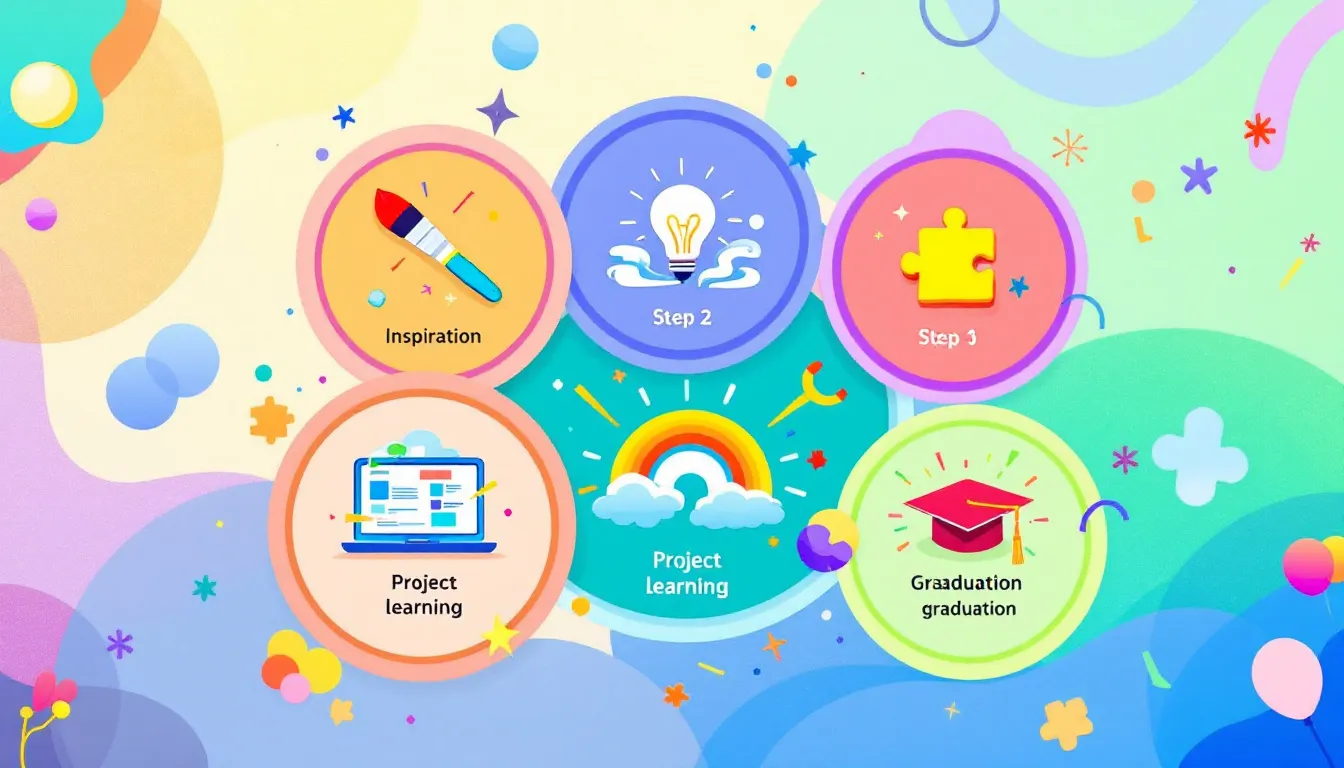Virtual whiteboards are transforming homeschooling, making online lessons interactive and engaging. Here's what you need to know:
- Virtual whiteboards are digital tools for real-time drawing, writing, and collaboration
- They boost learning by allowing students to see and interact with information
- These tools work well with platforms like Microsoft Teams, Google Classroom, and Zoom
Top 11 virtual whiteboards for homeschooling:
- Google Jamboard
- Miro
- Explain Everything
- Microsoft Whiteboard
- Limnu
- Zoom Whiteboard
- Conceptboard
- Stormboard
- Ziteboard
- Aww App
- Whiteboard.fi
Quick Comparison:
| Whiteboard | Best For | Free Plan | Paid Plan Starts At |
|---|---|---|---|
| Miro | Feature-rich collaboration | 3 boards | $8/month |
| Google Jamboard | Simple, quick use | Unlimited | Free (app only) |
| Explain Everything | Education-focused | Basic features | $69/year |
| Microsoft Whiteboard | Microsoft 365 users | No | $6.99/month |
| Whiteboard.fi | Real-time student monitoring | Yes (with ads) | Not specified |
Choose based on your needs, budget, and preferred features. Try free versions before committing to find the best fit for your homeschooling setup.
Related video from YouTube
What Virtual Whiteboards Do
Virtual whiteboards bring the classroom to your living room. They're online tools for drawing, writing, and collaborating in real-time.
Main Features
These digital boards pack a punch:
- Drawing tools (pens, shapes, text boxes)
- Sticky notes for brainstorming
- Real-time editing for teamwork
- Infinite canvas (no space limits!)
- Ready-to-use templates
- Cloud storage
Many play nice with Microsoft Teams and Google Classroom.
Boosting Homeschool Teaching
Virtual whiteboards make learning hands-on:
- Visual learning: Sketch out tricky concepts
- Team projects: Kids collaborate from anywhere
- Instant feedback: See and comment on work right away
- Review later: Save lessons for future study
- Spice it up: Add videos and images to lessons
Homeschooling in Action
Here's how homeschoolers put these tools to work:
1. Math magic
Teachers break down problems step-by-step. Kids solve on their own boards.
2. Language games
Play digital pictionary or label items in a new language.
3. Science simplified
Create and label diagrams of cells, the water cycle, or other concepts.
4. History comes alive
Build interactive timelines with images and text.
5. Literature explored
Map out characters, themes, and plot points for deeper discussions.
Virtual whiteboards turn boring lessons into engaging experiences. They keep kids focused and make homeschooling more fun and effective.
How to Choose a Virtual Whiteboard
Picking the right virtual whiteboard for homeschooling can make or break your online teaching. Here's what to look for:
Is It Easy to Use?
A good whiteboard should be simple for parents and kids. Look for:
- Clear controls
- Easy-to-find tools
- Quick setup
Test it out before you buy. Many tools offer free trials, so give them a spin.
Can People Work Together?
Teamwork matters in homeschooling. Choose a whiteboard that allows:
- Real-time collaboration
- Multiple users at once
- Offline work options
Miro, for example, lets teams work together in real-time and has features like sticky notes and voting tools.
Does It Play Nice with Other Tools?
Consider how the whiteboard fits into your setup:
| Factor | What to Check |
|---|---|
| Compatibility | Works with your video call platform |
| Integration | Connects with learning systems |
| Storage | Syncs with your cloud services |
| Price | Fits your budget (free options exist) |
Google Jamboard is free for Google account holders, making it a solid choice for many families.
Can You Tweak It?
Flexibility is key for different subjects. Look for:
- Customizable templates
- Various drawing tools
- Options to import different content
Conceptboard, for instance, works with cloud storage and includes video calls, giving you a flexible platform for different teaching needs.
11 Best Virtual Whiteboards for Homeschool Teaching
Let's dive into the top virtual whiteboards for homeschooling:
1. Google Jamboard
Free and user-friendly, but shutting down by end of 2024.
- Works with other Google tools
- Save boards, export as images or PDFs
- Multiple whiteboards per session
2. Miro
Full-featured with a large user base.
- 2,500+ board templates
- Real-time collaboration
- Integrates with Slack, Trello, etc.
| Plan | Price | Boards |
|---|---|---|
| Free | $0 | 3 |
| Paid | $8/mo | Unlimited |
3. Explain Everything
Made for teachers:
- Education templates
- Lesson recording
- Two-way student collaboration
4. Microsoft Whiteboard
Part of Microsoft 365:
- Integrates with Microsoft apps
- Interactive lessons
- Starts at $6.99/month
5. Limnu
Simple interface for online tutoring:
- Free plan: 14-day board access
- Pro plan: $5/month
- Great for one-on-one teaching
6. Zoom Whiteboard
Built into Zoom:
- Basic: 3 boards
- Advanced: $24.80/user/year
- Enhances live visual explanations
7. Conceptboard
Team collaboration focus:
- Cloud storage integration
- Video call features
- Good for group projects
8. Stormboard
Ideal for brainstorming:
- Free for up to 5 people
- Business: $8.33/month
- Helps organize ideas
9. Ziteboard
Real-time collaboration:
- Sticky notes and board chat
- Great for group discussions
- Free plan has limits
10. Aww App
Quick setup:
- No registration needed
- Real-time collaboration
- Perfect for impromptu sessions
11. Whiteboard.fi
Individual student whiteboards:
- Teacher sees all work in real-time
- Join via link or QR code
- Free plan with some ads
Choose based on your needs: quick sessions vs. long-term projects. Test a few to find your perfect fit.
sbb-itb-fb77983
Comparing the Whiteboards
Let's see how these virtual whiteboards stack up:
Feature Comparison
| Whiteboard | Templates | Collaboration | Integrations | Drawing Tools |
|---|---|---|---|---|
| Miro | 2,500+ | Real-time | 100+ apps | Advanced |
| Google Jamboard | Limited | Real-time | Google apps | Basic |
| Zoom Whiteboard | Basic | In-call | Zoom | Basic |
| Explain Everything | Education-focused | Two-way | LMS | Advanced |
| Microsoft Whiteboard | Basic | Real-time | Microsoft 365 | Intermediate |
| Stormboard | Multiple boards | Up to 5 users (free) | Limited | Basic |
| Ziteboard | Basic | Real-time | Audio/Video | Intermediate |
Price Comparison
| Whiteboard | Free Plan | Paid Plan Starting Price |
|---|---|---|
| Miro | Yes (3 boards) | $8/user/month |
| Google Jamboard | Yes | $0 (app only) |
| Zoom Whiteboard | Yes (3 boards) | $24.80/user/year |
| Explain Everything | Yes (basic) | $69/user/year |
| Microsoft Whiteboard | No | $6.99/month |
| Stormboard | Yes (5 users) | $8.33/month |
| Ziteboard | Yes (3 boards) | Not specified |
Device Compatibility
- Miro: Web, iOS, Android
- Google Jamboard: Web, iOS, Android, dedicated hardware
- Zoom Whiteboard: Zoom app (desktop, mobile)
- Explain Everything: Web, iOS, Android
- Microsoft Whiteboard: Windows, iOS, Android, web
- Stormboard: Web, iOS, Android
- Ziteboard: Web, iOS, Android
Picking the right virtual whiteboard for homeschooling? Think about what you need.
Use Google apps? Jamboard might be your thing. Want tons of features and templates? Miro could be the way to go. Teaching math? Whiteboard Fi gives each student their own board.
Here's a tip: Try the free versions before you buy. It's the best way to see what works for you.
Tips for Using Virtual Whiteboards in Homeschooling
Getting Started
Pick a virtual whiteboard that works for you. Try out free versions of Miro, Google Jamboard, or Explain Everything before you decide.
Set up a spot for online learning. Keep school stuff close by.
Get your whiteboard ready before class. Split it into sections or slides. It'll save time and keep things moving.
Get to know the basics. Learn how to draw, add text, and share. It'll make teaching easier.
Keeping Students Interested
Mix it up. Use videos, pictures, and sound. Show HD planet pics in a space lesson.
Let kids join in. They can answer questions or share ideas right on the board.
Make it fun. Use polls, quizzes, or group drawing to keep kids active.
Give choices. Some kids might like reading outside and watching videos inside.
Using Whiteboards for Different Subjects
| Subject | Whiteboard Ideas |
|---|---|
| Math | Solve problems together, use shapes for geometry |
| Science | Make diagrams, label cell parts |
| History | Create timelines, mark up maps |
| Language Arts | Brainstorm stories, break down text |
| Art | Show drawing tricks, look at student work |
For all subjects:
- Use colors to highlight important stuff
- Save lessons for later
- Try visual notes like mind maps
Solving Common Problems
Virtual whiteboards can be great for homeschooling, but they're not perfect. Let's tackle some common issues.
Fixing Tech Issues
Tech problems? No sweat. Try these quick fixes:
- Sound issues? Check your mic and speakers. Unplug and replug headphones.
- Can't see the whiteboard? Refresh the video panel, not the whole page.
- Whiteboard not loading? Use the top-left arrows to refresh.
- Browser acting up? Try a different one or go incognito.
For bigger problems, contact tech support. Many platforms offer 24/7 help.
Helping Students Stay Focused
Keeping kids on task online can be tricky. Here's what you can do:
- Use RescueTime to track site usage.
- Try Forest app to make focusing fun.
- Set up Screen Time (iOS) or Digital Wellbeing (Android) to monitor device use.
"Success begets success. Consider focusing your feedback around your child's effort, rather than the outcome of their work." - Betsy Smith, author
Managing Screen Time
Online learning means more screen time. Here's how to keep it in check:
| Age Group | Daily Screen Time (excluding school) |
|---|---|
| Under 2 | 0 hours (except video chats) |
| 2-5 | 1 hour max |
| 5-17 | 2 hours max |
Tips:
- Create a screen time plan with your kids.
- Focus on content quality, not just time.
- Take breaks to stretch and rest eyes.
- No screens 30-60 minutes before bed.
"While that might seem like a lot of screen time, it isn't mindless scrolling through the deep-sea Internet while staring at the computer." - Alyssa, parent
What's Next for Virtual Whiteboards in Homeschooling
Virtual whiteboards are set to transform homeschooling. By 2030, the interactive whiteboard market could hit $6.3 billion, growing 7.6% yearly. Here's what's coming:
AI-Powered Features
AI will shake things up:
- Real-time translation for global homeschool groups
- Smart progress tracking for parents
- Personalized learning for each student
Zoom's already on it. Their AI Companion helps with brainstorming, making it easier to:
- Kick off projects
- Group ideas
- Dig deeper into topics
Future AI might even:
- Give live feedback on presentations
- Sum up lessons
- Turn whiteboard scribbles into images
Tackling Homeschool Challenges
Virtual whiteboards are evolving to solve homeschool-specific issues:
| Problem | Solution |
|---|---|
| Bored students | Game-like features |
| Progress tracking | AI assessment tools |
| Subject juggling | Smart content sorting |
| Homeschooler isolation | Built-in teamwork tools |
The endgame? Making homeschooling a breeze for parents and kids alike.
Wrap-Up
Virtual whiteboards are changing the game for homeschool teaching. They bring the classroom home, making online lessons interactive and fun.
Why try them?
- They boost learning. Kids see and interact with info, which helps it stick.
- They enable teamwork. Students can collaborate on projects in real-time.
- They're versatile. Use them for any subject, from math to art.
- They save money. No need for physical supplies.
Want to start? Here are free options from top tools:
| Tool | Free Offer | Best For |
|---|---|---|
| Miro | 3 editable boards | Task management |
| Google Jamboard | Unlimited boards | Simple, quick use |
| Whiteboard.fi | Individual student boards | Real-time monitoring |
These tools can make your homeschool lessons more engaging and effective. Give them a try and see the difference they can make in your teaching.


